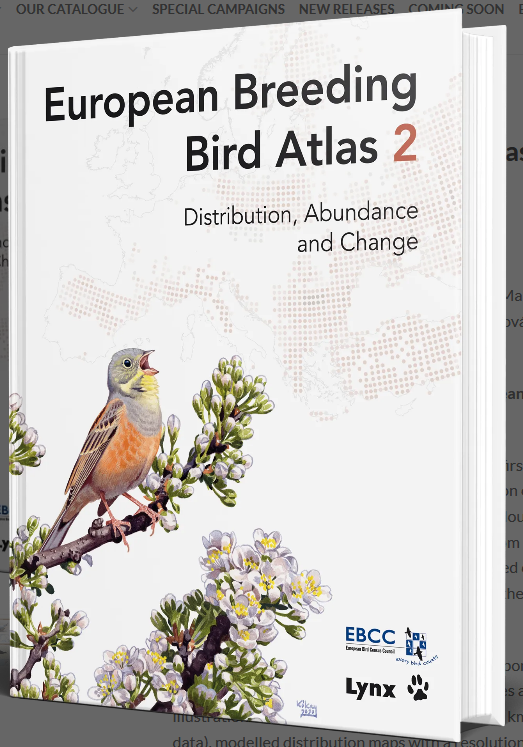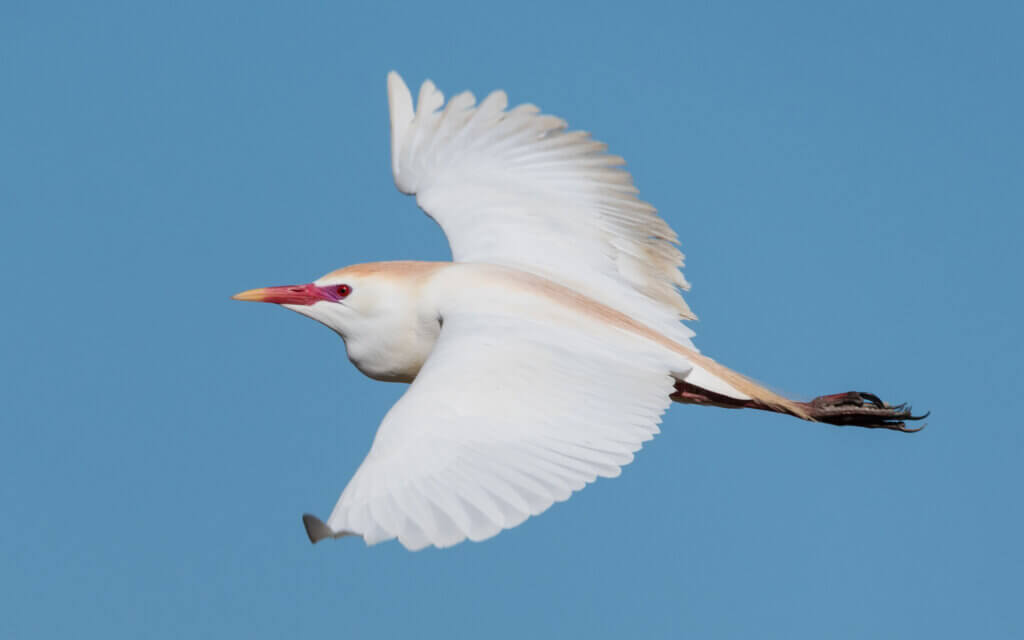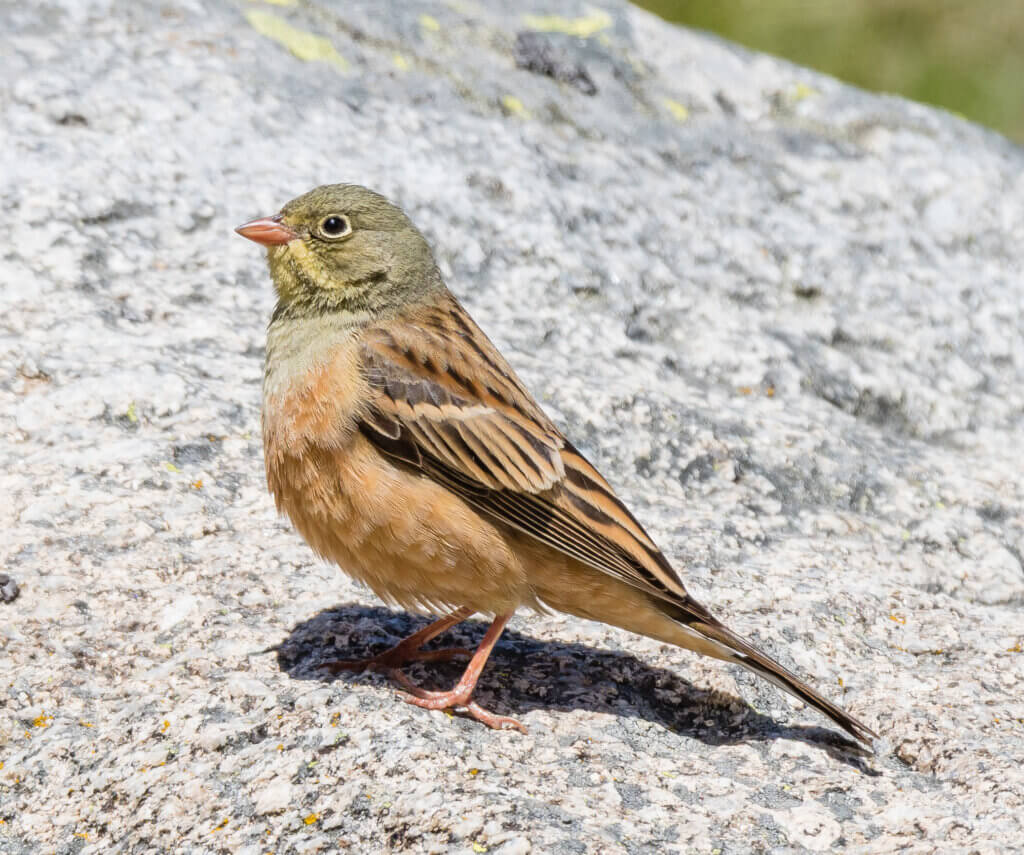Europe’s breeding birds get long-overdue stocktake

New European Breeding Bird Atlas, a milestone for biodiversity research and nature conservation in Europe, is published today.

| Highlights The European Bird Census Council (EBCC) publishes the second European Breeding Bird Atlas EBBA2, a milestone for biodiversity knowledge in Europe A tremendous collaborative effort by the EBCC and its partner organisations made it possible to collect bird data from across 11 million km2 in a systematic and standardised manner. With around 120,000 volunteer fieldworkers from all countries in Europe, EBBA2 is one of the biggest citizen science projects on biodiversity ever. The book will be launched on 3 December 2020 via live streaming at https://youtu.be/lme2TBqoIEw. Selected results Almost 600 bird species currently breed in Europe; 539 are native species and 57 non-native (introduced from elsewhere in the world). Most of these species are not widespread but restricted to small areas of Europe. 35% of all native species have increased the area where they breed over the last 30 years, 25% have contracted their breeding range and the rest did not show a change or the trend is unknown. ‘Winners’, with increased ranges, include many species of forests and those protected by international legislation. ‘Losers’, with decreased ranges, include many species of farmland. Land use change and climate change appear to be the main causes of changes in distribution. During the fieldwork period 2013–2017 EBBA2 recorded 539 native bird species breeding in Europe, 59 of which are mainly concentrated in Europe (near-endemics) and 40 are species that can be found only in Europe (endemic). There are few species as widespread as White Wagtail or Common Cuckoo, which were recorded in over 85% of all 50-km squares surveyed in EBBA2. More than 50% of the species occurred in less than 10% of all surveyed squares, so that all countries and regions have their own specific responsibility towards this common wealth. EBBA2 data show that 57 non-native species breed in Europe, i.e. one in ten of European breeding bird species has been introduced from elsewhere; 39 of these species were documented for the first time in the last three decades. Marked changes were observed in the European avifauna in the last 30 years. According to EBBA2 analyses, 35% of all native species increased the area where they breed, among them Cattle Egret, Citrine Wagtail or Mediterranean Gull. On the other hand, 25% of species have shown a decrease in area, e.g. Ruff, Great Bustard, European Roller or Ortolan Bunting, the species shown on the book cover. Furthermore, the breeding ranges of European birds have shifted northwards by an average of 28 km (ca 1 km per year). As many species shift their ranges northwards, species richness of forest birds is increasing, probably also as a result of land abandonment resulting in forest regrowth. Many other aspects are treated in the book. For instance, specialists of montane grasslands and tundra, mires and moorland are losing ground in substantial parts of their ranges. EBBA2 presents a new baseline on the European avifauna, with an unprecedented geographical coverage from the Azores to the Ural Mountains. EBBA2 is also one of the biggest-ever citizen science projects focusing on mapping biodiversity. In total, around 120,000 fieldworkers contributed data to the atlas, the great majority of them on a voluntary basis. Verena Keller from the Swiss Ornithological Institute, EBCC board member, EBBA2 project manager and the lead author of the book comments: “EBBA2 was only possible thanks to the EBCC network of organisations and individuals from all corners in Europe, all dedicated to a common goal, cooperating across all borders and barriers.” Mark Eaton, EBCC chair, looks into the future: “This incredible new book, and the database that underpins it, will serve to enable further research and support conservation of birds and other biodiversity across Europe for decades to come.” David Noble, previously EBBA2 Steering Committee and Principal Ecologist – Monitoring at British Trust for Ornithology (BTO), said, “Information from the UK during the period 2013 to 2017 came from a wide range of sources including BirdTrack and other international online recording schemes, the BTO/JNCC/RSPB Breeding Bird Survey (BBS), the Waterways Breeding Bird Survey, the RSPB reserve network, and a volunteer gap-filling exercise in 2017. Because good evidence of breeding is so crucial to defining species breeding distributions, some of the most important data sets include the BTO’s Ringing Scheme, even more obviously the Nest Records Scheme and for rarer species the Rare Breeding Birds Panel. Overall, almost a million records collated between 2013 and 2017 fed into this, making great use of data collected by volunteers for other purposes.“ Dawn Balmer, National Coordinator for the UK, BTO says “Having just completed our own amazing Bird Atlas 2007-11 project, we were challenged to start data collection again for this hugely important European Atlas. We were fortunate to be able to use data from our annual monitoring schemes and our wonderful volunteers across the UK rose to the challenge to undertake fieldwork in places where there were gaps in information. It was important the UK delivered the most up-to-date information we could, and we would like to thank all the volunteers that contributed records“ The project would not have been possible without dedicated fieldworkers, national coordinators, experts contributing to analyses and presentation of the data, donors and other supporters. EBBA2 in a nutshell 596 breeding bird species 10 years of work 120,000 fieldworkers 48 national partners 5 years of fieldwork 5,110 50-km squares with information on breeding birds 11,075,000 km2 covered The book 556 full species accounts 69 species treated in the appendix 689 50-km maps showing abundance or breeding evidence 222 10-km modelled maps 446 maps showing change in distribution since the last atlas 568 new species illustrations by 46 artists 348 authors of species texts 960 pages The results of EBBA2 are published in a comprehensive book in partnership with Lynx Edicions. An on-line interactive version of the atlas maps is planned to be published at a later stage. |

The work that Cornell are doing is amazing, https://ebird.org/science. Any chance we’ll see something like a European eBird?
The BTO seem to be halfway there but distribution maps really need to be real-time – habitat, climate, populations and policies change too fast for the big survey every few years way of doing things.
I’m really looking forward to my (pre-ordered) copy to arrive – surely the must-have if pricey book of the year. The ‘overdue stocktake’ may slightly over state the case as this is the second European atlas – the first one was – and is – fascinating in its own right.
As the publicity says, there’ll be some big changes & surprises. I saw 97 cattle Egrets on the Levels yesterday, not something one would have expected at the millenium. At the wetland I watch in SW France since 2007 Glossy Ibis, Night Heron, Squacco Heron and Western Swamp Hens have gone from possibles to substantial breeding populations.
But in Britain Nightingales are in retreat when climate says they should be expanding, and across Europe too many trees as land is abandoned (France is gaining 70,000 ha pa of woodland, little of which is planted) is a big problem for birds, and even more immediately for butterflies.
https://www.bto.org/press-releases
(a link which the BTO’s website sent me to whilst trying to find the press release).
“The page you are looking for could not be found.”
(It’s got a nice picture of a little owl, tho).